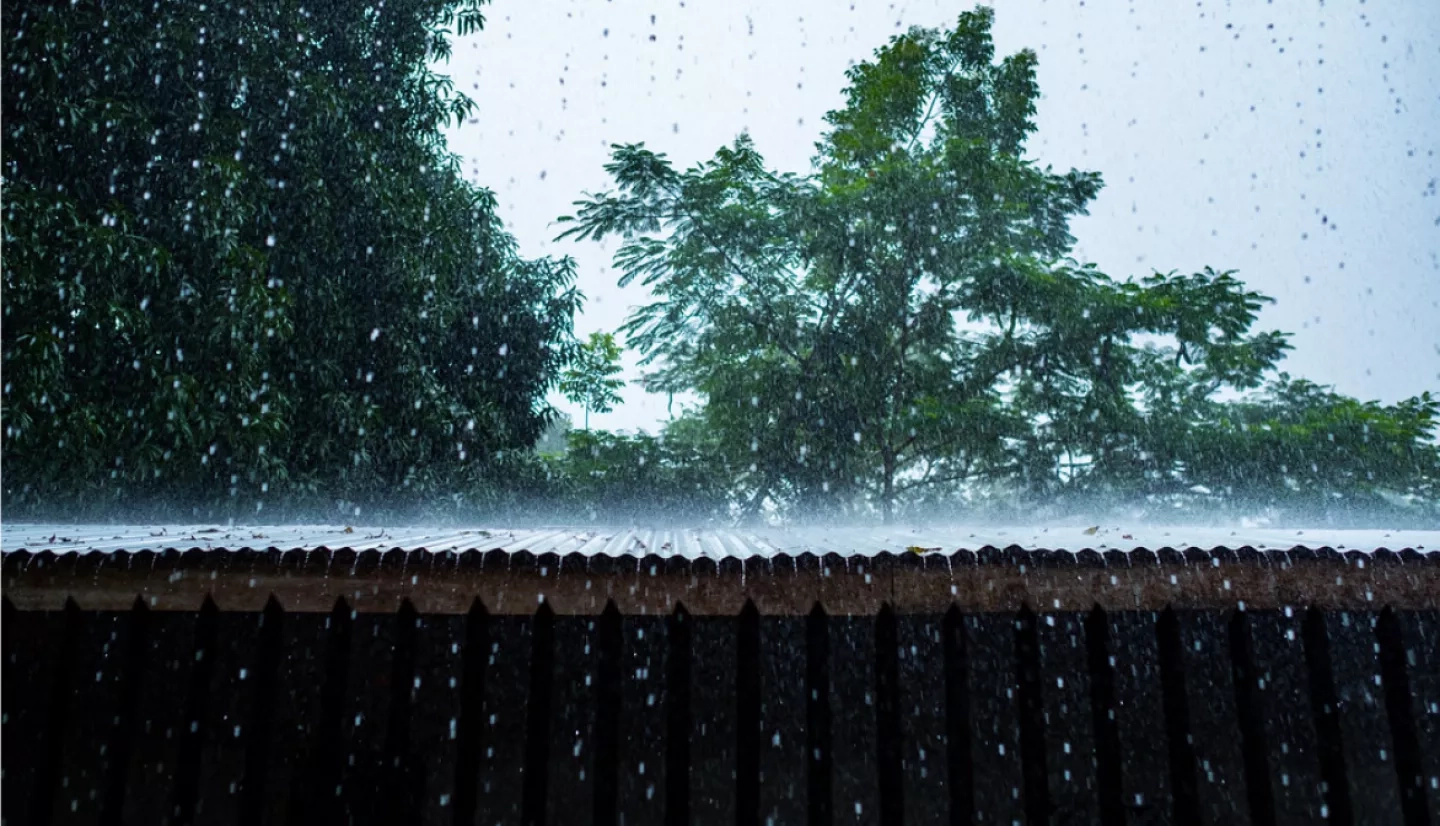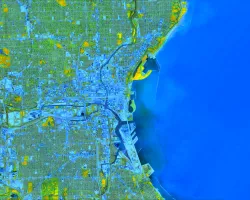Meet SERVIR’s Applied Sciences Team for Weather & Climate
How would your life change if there were no more weather forecasts?
NASA supports local experts around the world to help their communities access and use weather and climate information.
In the United States, many of us might see our weather forecasts as a simple convenience, but communities and economies often rely on trustworthy forecasts to function. We depend on weather and climate predictions to make decisions about our farms, water systems, infrastructure, transportation, and public safety. We might take it for granted, but fast, reliable information about climate and weather conditions is invaluable. Unfortunately, the resources necessary to produce reliable forecasts–ground-based radar stations, satellites that monitor weather systems, and computationally-intensive software–have not always been accessible in much of the world.
SERVIR, a joint partnership of NASA and USAID, helps countries in Asia, Africa, and the Americas expand their capacity to use NASA weather and climate resources to better inform decision-making. The SERVIR Applied Sciences Team (AST) is a group of Earth science experts selected by the NASA Applied Sciences Program to collaborate with investigators at SERVIR’s regional hubs, helping ensure that NASA science and technology is accessible and useful to users. Three members of the AST team connect with local experts in Asia and Africa to help communities achieve the weather and climate information communities need to make strong decisions in an increasingly variable climate.
Shrad Shukla
PROJECT: Integrating satellite observations and sub-seasonal climate forecasts to enhance agricultural and pastoral water-management in West Africa
Much of West Africa has historically lacked the resources needed for weather and climate forecasting infrastructure, but with high rates of poverty and much of the population working in agriculture and herding, communities are particularly vulnerable to sharp changes in climate. Local meteorologists are vital to guiding decisions that will help adapt food and water systems, reduce resource conflict, and keep communities safe from disasters, but weather agencies in the region are often under-resourced. To help West Africa build up self-reliant climate resilience, NASA is looking to strengthen the capacity of national meteorological agencies to produce valuable water availability forecasts for farming and grazing.
Dr. Shraddhanand Shukla is a hydrologist at the University of California Santa Barbara. Working in their Climate Hazards Center he connects with regional agencies to make NASA’s satellite and model-based resources available to forecasters in the region. To make NASA science more applicable to the community, Shukla and his collaborators are developing a system to produce 30-day forecasts–released bi-weekly and communicated in terms of water deficits and the impacts that farming and herding communities can expect. The forecasts are distributed through AGRHYMET, a collaborating institute based in Niamey, Niger that provides weather and climate forecasts for the region. By developing forecasts that are designed around the needs of farming and herding communities, the project seeks to maximize its usefulness and center local interests.
“We are working closely with AGRHYMET to empower them to address critical existing gaps in climate services in the region,” said Shukla. In addition to climate and water forecasts, this collaboration also includes training events and exchanges in the region to foster local capacity to use geospatial resources. “Our partnership with AGRHYMET is crucial as it allows us to better understand the needs in the region, learn from the regional experts, and plan for how our project can best support AGRHYMET’s climate service mandate.”
Aaron Naeger
PROJECT: Advancing Air Quality Monitoring and Prediction Capabilities in the Hindu-Kush Himalayan Region
Across South Asia, rapid urbanization and industrialization has elevated air pollution levels into a major societal concern. Certain weather conditions can further exacerbate air quality in the region, turning everyday smog into a serious, life-threatening public health threat. Stable layers of air over cities can trap pollution close to the ground, while changes in winds can readily transport pollution to other communities. In countries like Bangladesh, Nepal, and Pakistan, millions of people in large urban centers are frequently exposed to dangerous levels of air pollution. By carefully informing communities on the rapidly changing air quality and weather conditions in the region, public health risks to air pollution can be significantly reduced.
Dr. Aaron Naeger is an atmospheric scientist with NASA’s Short-term Prediction and Research Center (SPoRT), a program that supports weather forecasters in using satellite technology to improve their short-term predictions. He is also the Deputy Program Applications Lead of the upcoming NASA Tropospheric Emissions: Monitoring of Pollution (TEMPO) mission, which is a geostationary satellite instrument designed to monitor air pollutants at hourly frequency throughout the daytime. His expertise makes him a valuable resource in helping support communities tackling air pollution around the world. With SERVIR’s Hindu Kush-Himalaya hub, Naeger has not only helped to develop a service for monitoring and forecasting air pollution in the region, but has also engaged with local communities to ensure that the service is as useful as possible to community interests.
“Our overarching goal is to build a cutting-edge and sustainable air quality toolkit that can be confidently applied by the diversity of stakeholders and end-users in the region,” said Naeger. For the project to be sustainable and take root in existing decision-making processes, Naeger and SERVIR have worked to not only ensure the quality of the service itself, but also the skills and information necessary for partners to be comfortable operating it. By maintaining dialogue and active participation with air quality agencies in these countries, SERVIR is working to build a service that these partners have faith in from the start.
Franz Meyer
PROJECT: A Cloud Computing Toolbox for SAR-based Monitoring of the Hydrologic Cycle in the SERVIR Hindu-Kush Himalayan Region
Many communities in the Hindu Kush and Himalayan Mountains–communities have to deal with droughts and wildfires in one season, then in the next season, due to monsoons in South Asia, torrential floods and landslides. Deforestation, population growth, and the remote locations of many communities in the region can all exacerbate the hazards of a climate that is highly variable, even without considering the added impacts of climate change. With such fickle weather, authorities need reliable weather monitoring if they want to be able to keep those communities safe.
To get a fuller picture of the water cycle in an area, many Earth scientists are turning to an increasingly popular technology: synthetic-aperture radar, or SAR. SAR satellites can send different wavelengths of radar through clouds to bounce off of water on Earth surface or penetrate into dense vegetation and moist soils. Put together with other weather data, SAR makes it possible to achieve holistic forecasts of flood and drought conditions.
Self-proclaimed “SAR evangelist” Dr. Franz Meyer, a geophysicist at the University of Alaska–Fairbanks, is working to make SAR accessible to communities in the Himalayas. Together with the SERVIR Hindu Kush-Himalaya hub, Meyer is helping create a fully-automated service that uses SAR to generate flood maps automatically and across large regions whenever severe weather is detected. Due to the large amount of data and long computations associated with SAR, this so-called “HydroSAR” service was designed to operate on the cloud so as to work efficiently and quickly, even for communities with limited access to strong computing resources. Meyer has also been helping provide training workshops to get local authorities familiar with the use and interpretation of the HydroSAR technology.
“While SAR…is a tremendously useful data source for monitoring flooding events in the Hindu Kush-Himalaya, its enormous data volumes and complex processing procedures have limited the uptake of this sensor type by many user communities,” said Franz about the challenges of working with this technology. Adopting advanced new technology can create new possibilities for services, but it can sometimes come with the cost of being less accessible to many potential users. Working with the International Centre for Integrated Mountain Development (ICIMOD) in Nepal, Meyer and SERVIR made it a priority to help partners–like meteorological departments in Nepal and Bangladesh–get well-acquainted with SAR. “Within HydroSAR, we have worked closely with ICIMOD to develop technology that makes SAR data much more accessible and much easier to use.”
The availability of high-quality weather and climate forecasts is easy to overlook, but has a tremendous value to the decision-making of many different sectors. Though helping communities improve forecasting might seem like a minor step, better information can have a domino effect that can lead to benefits like climate-ready agriculture and improved public health. Organizations like AGRHYMET and national weather agencies in the Hindu Kush-Himalaya play an under appreciated role in keeping their communities ready, especially as climate change introduces new challenges for community decision-making around the world.
This article is the third in a series highlighting members of the SERVIR Applied Sciences Team. To learn about our AST members in other fields, check out our previous installments on agriculture and food security and land use and land cover. Stay tuned for our final installment on water and hydrological disasters!







